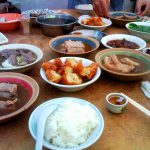Groups of people tend to expand their culture over time, based on their knowledge, beliefs, and behavior of their group members. A group culture represents that unity people create when working together and with the same goals in mind, for example, Koreans who use Pinnacle Vip 코드. Shared beliefs are at the core of such communities and groups like that can thrive when mutual understanding and cohesion are at play.
What is culture?

The concept of culture is very difficult to pin down because there are too many variants. For a while, Japan was considered to be one of the most homogenous nations on Earth. However, the activity of many young Japanese and the emergence of sub-groupings tell us differently, so we are starting to doubt that idea.
Culture consists of the things people have, the things they do, and what they think, at least according to Herskovits. Members of a cultural group develop and maintain their group culture through mutual interaction, but culture is not only about interaction, but also about content and mutual cooperation.
Common expectations
Expectations have a significant impact on shaping a group culture, as they influence our efforts related to the accomplishments and desired outcomes from our teaching. In this way, expectations act like a compass that keeps us moving towards our goal. Expectations operate as “belief sets” which is a tad different from the way teachers usually think of expectations.
Language as a tool of communication
A language is a primary tool in a system of communication, and it helps communities to negotiate shared meanings and understand ideas and actions. It is perhaps the key element in shaping a group culture as it helps us to direct attention and action. Words and structures that make up a language have the power to create connections and associations that shape and influence our behavior. Language has that subtle ability to carry messages that develop our thinking and group affinity.
Environment is important
Environment presents a physical space occupied by a group, which includes its design, setup, displays, and furnishings. It is the “body language” of a cultural organization that shares values and key messages, even when its habitats are absent. For example, school , as a physical environment, will dictate how students (individuals) interact with each other, how they behave, and create.
Routines shape our culture
Routines are a group’s way of doing things, a set of shared practices. They are the foundation of classrooms because they guide activities that happen there. Whether routines are used for participation, discourse, learning, or thinking, their purpose is to simplify things, and minimize the confusion. Routines serve as patterns for groups and individuals and serve as a scaffolding for learning and thinking.







